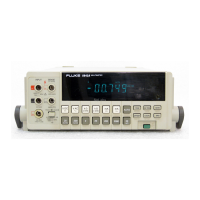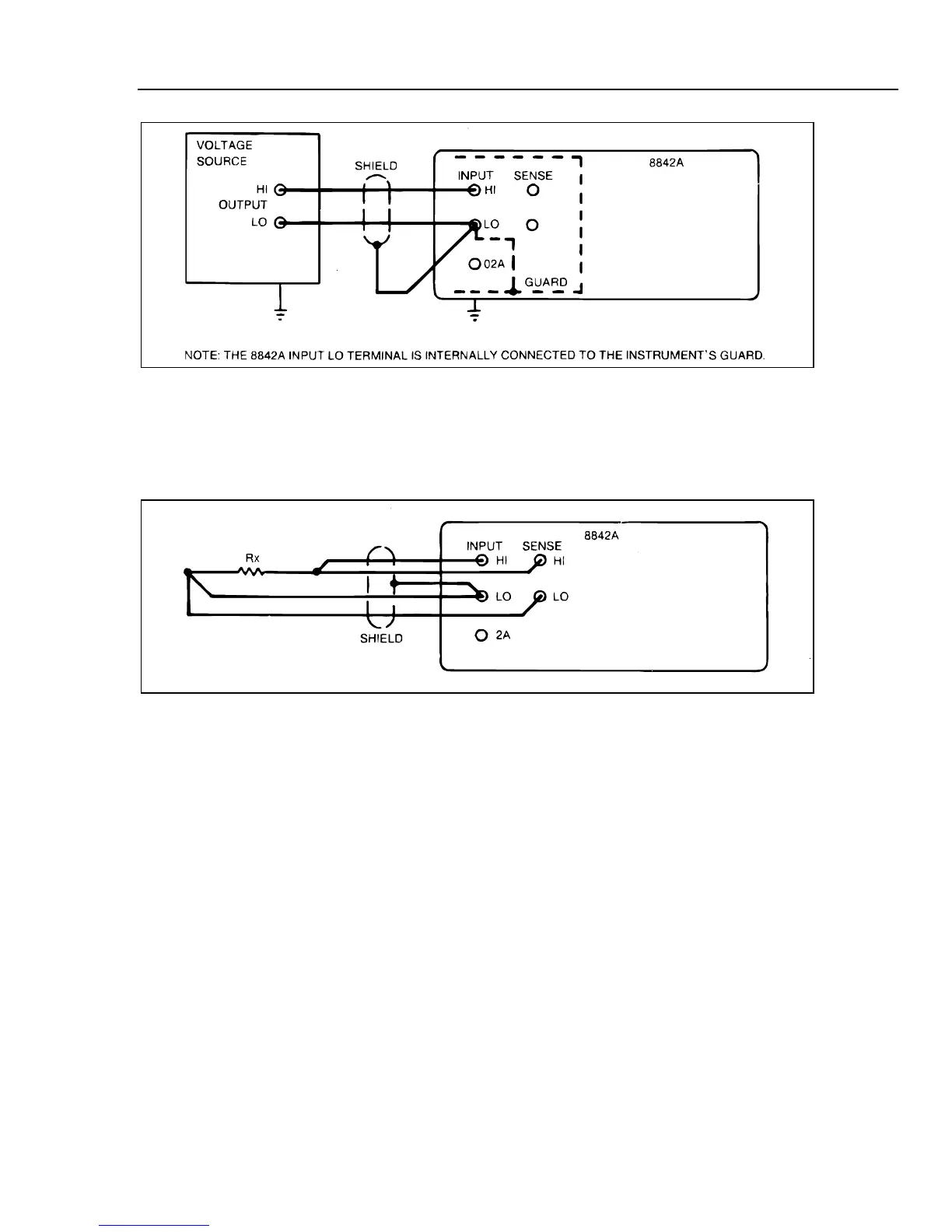Measurement Tutorial
MAKING ACCURATE HIGH-RESISTANCE MEASUREMENTS
4
4-15
f4-10.wmf
Figure 4-10. Shielding for Low Voltage Measurements
For low-level resistance measurements, connect the test lead shielding as shown in Figure
4-11. Use the 4-wire ohms function to minimize the error caused by the resistance of the
test leads.
f4-11.wmf
Figure 4-11. Shielding for Low Resistance Measurements
Errors due to thermal voltages should also be considered when making low-level voltage
or resistance measurements. Techniques for reducing thermal voltages are presented
earlier in this section.
4-24. MAKING ACCURATE HIGH-RESISTANCE
MEASUREMENTS
When high resistances are measured (typically 1 MΩ or greater), leakage resistance at the
test circuit can provide enough shunt resistance to degrade the accuracy of the
measurement (see Figure 4-12). To minimize leakage resistance, watch out for
contamination, high humidity, poor-quality interconnections, and poor-quality insulation
of the stand-offs on which test resistors are mounted.
High-resistance measurements are also susceptible to error from electrical noise pickup.
For accurate measurements, use short test leads and enclose the test leads and test circuit
in a proper shield that is connected to the 8842A’s INPUT LO terminal. Pickup of slowly
fluctuating noise can also be reduced by using the OFFSET feature as described in
paragraph 4-7.

